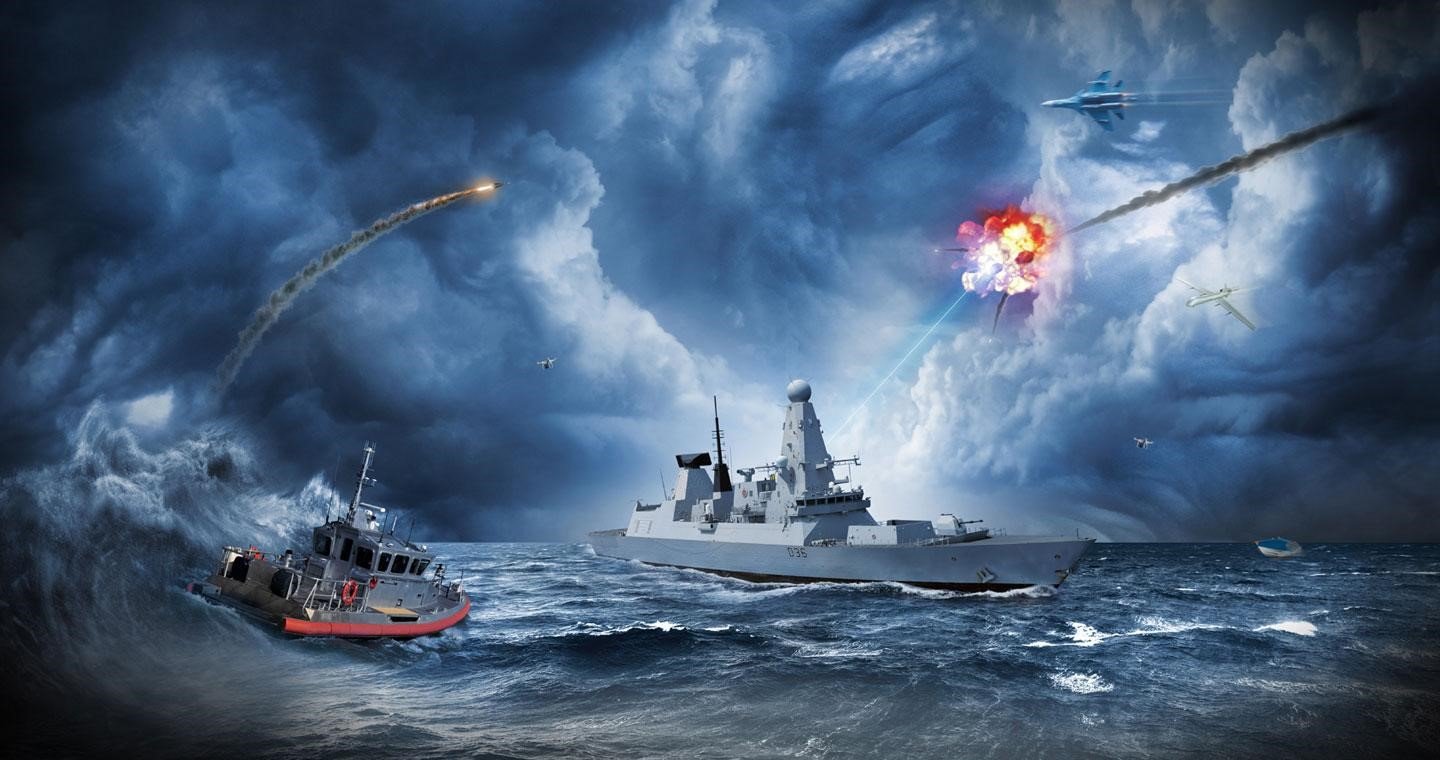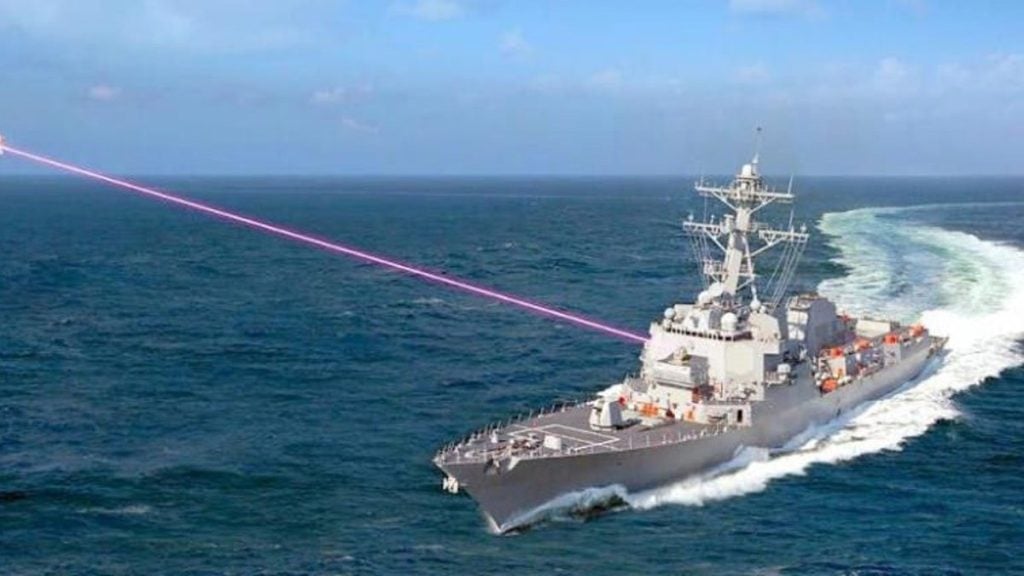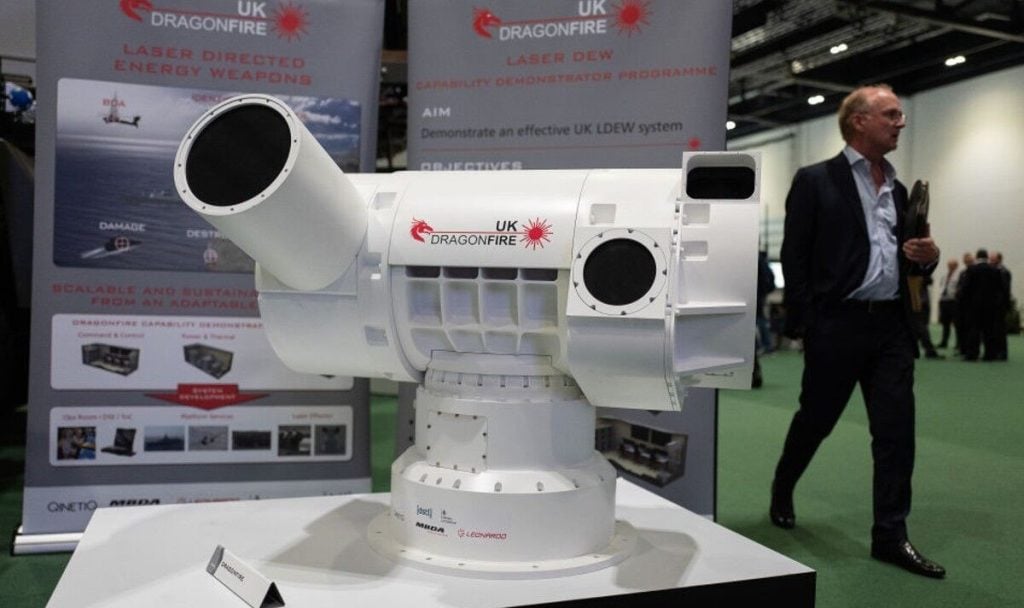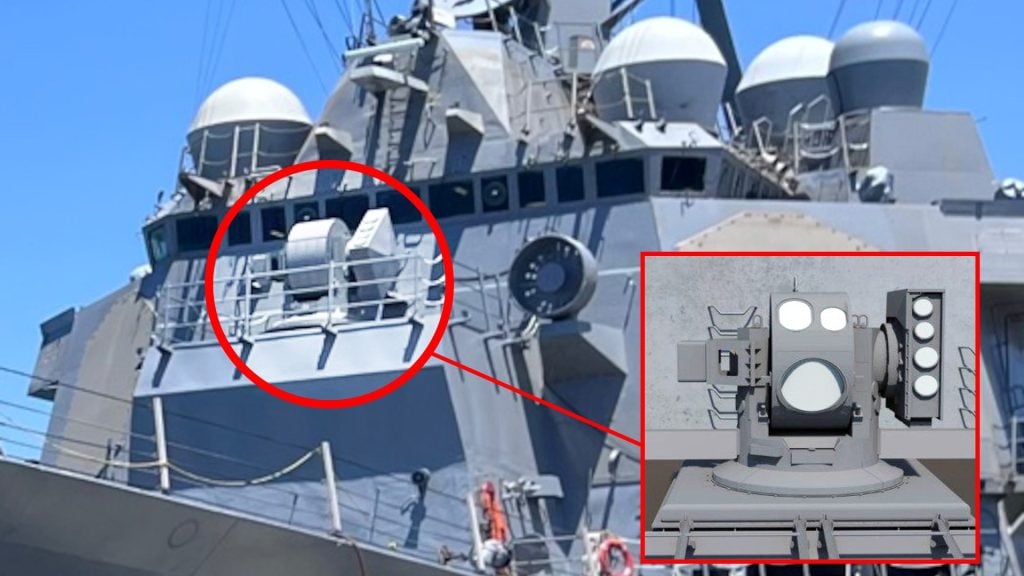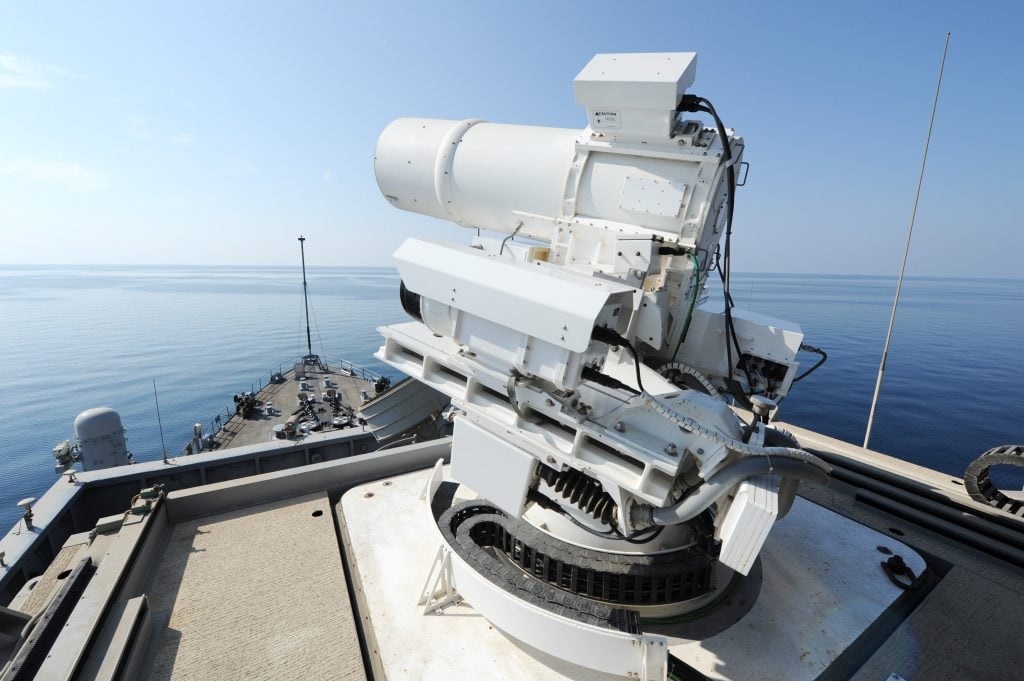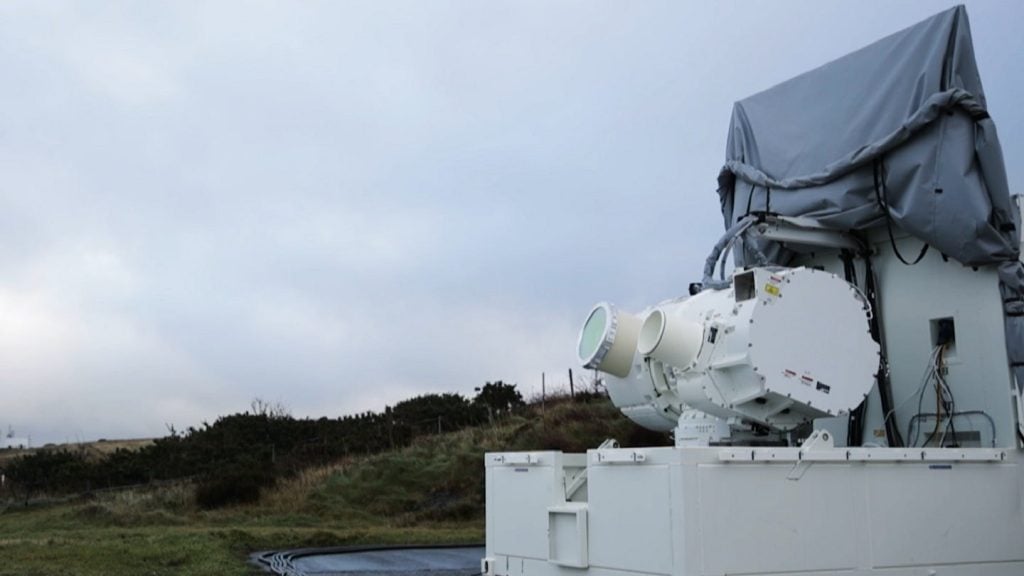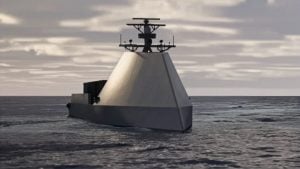The United States Navy has been investing heavily in high-energy laser (HEL) and high-power microwave (HPM) technologies for over a decade, with the goal of equipping its warships with directed-energy weapons (DEWs) that can counter emerging aerial threats like drones and missiles. However, despite these substantial investments and research efforts, the Navy has struggled to meaningfully integrate these cutting-edge capabilities into its fleet. This has drawn criticism from senior naval leaders, who have expressed frustration at the slow pace of progress, especially when compared to the impressive demonstrations of the British Royal Navy’s DragonFire laser system.
As the Navy navigates the technical and logistical challenges of transitioning laser weapons from the laboratory to the battlefield, it finds itself in a race to catch up to its international counterparts and establish itself as a true laser powerhouse. This article will explore the Future Prospects of Naval Laser Weapons, the key milestones and setbacks, and the future prospects of these transformative directed-energy technologies as they reshape the landscape of naval warfare.
The Laser Weapon Landscape
The development of high-energy laser and high-power microwave weapons has been a global pursuit, with nations around the world investing in these transformative directed-energy technologies. While the United States has been at the forefront of much of this research and development, the Navy’s progress in fielding operational laser weapon systems has been criticized as sluggish, especially when compared to the achievements of its international counterparts.
One such example is the British Royal Navy’s DragonFire laser system, which has demonstrated remarkable capabilities, including the ability to strike a £1 coin from a distance of up to a kilometer. This system’s extreme accuracy, combined with its ability to engage targets at the speed of light and literally cut through them, has drawn admiring glances from the U.S. Navy leadership.
Why These 5 Countries Buy Chinese Fighter Jets
The U.S. Air Force’s Laser Weapon Breakthroughs
While the Navy has faced challenges in transitioning its laser weapon programs from the research and development phase to operational deployment, the U.S. Air Force has seen some notable successes in this domain. In 2022, the Air Force Life Cycle Management Center and Raytheon Technologies announced the successful testing of the Air Force’s first palletized high-energy laser weapon, known as the “H4.”
The H4 system was developed to protect personnel and assets from short-range aerial threats, and it has passed the Air Force’s rigorous test and assessment plan, which included several days of live-fire exercises to acquire, track, and destroy drone targets in various attack scenarios. This represents a significant milestone for the Air Force’s directed-energy efforts and could pave the way for further advancements in the field.
The Navy’s Laser Weapon Initiatives
While the Air Force has made strides with its H4 laser weapon system, the U.S. Navy has also been actively pursuing its own directed-energy capabilities. One of the Navy’s key programs is the Surface Navy Laser Weapon System (SNLWS) Increment 1, known as HELIOS, which was developed by Lockheed Martin.
In August 2022, Lockheed Martin announced that it had delivered a 60+ kW-class high-energy laser with integrated optical dazzler and surveillance (HELIOS) to the U.S. Navy. This tactical laser weapon system is designed to be retrofitted into existing ships, providing the fleet with a directed-energy capability that can complement traditional kinetic weapons.
The HELIOS system is reported to be integrated and scalable by design, allowing it to provide tactically relevant warfighting capabilities as part of a layered defense architecture. Additionally, the system is expected to support long-range intelligence, surveillance, and reconnaissance (ISR) missions, further enhancing the Navy’s situational awareness and decision-making capabilities.
Directed-Energy Weapons
The development of high-energy lasers and high-power microwaves is seen as a critical force multiplier for naval warfare, as these directed-energy weapons offer several strategic advantages over traditional kinetic munitions.
One of the primary benefits of laser weapons is their cost-effectiveness. Unlike missiles that can cost tens of thousands to millions of dollars per unit, the electrical output required to power a laser can be generated for less than a dollar per shot. This significant cost savings could help the Navy conserve its finite ammunition supplies while on station, providing a more sustainable and cost-effective means of engaging aerial threats.
Additionally, the speed-of-light engagement capabilities of laser weapons offer distinct tactical advantages. These systems can respond to fast-moving targets, such as drones and missiles, with a level of precision and responsiveness that is unmatched by conventional weapons. This could prove invaluable in defending naval vessels against the growing threat of swarming attacks by low-cost, expendable unmanned aerial systems.
Overcoming Technical and Logistical Challenges
Despite the clear strategic benefits of laser weapons, the Navy has faced several technical and logistical challenges in transitioning these technologies from the laboratory to the fleet. One of the primary hurdles has been the high development costs associated with these cutting-edge systems, which have slowed their integration into the Navy’s operational force structure.
Another challenge has been the need to ensure that these directed-energy weapons can be seamlessly integrated into the existing shipboard infrastructure and command-and-control systems. This requires extensive testing, validation, and modifications to ensure the laser weapon systems can reliably and effectively operate alongside the Navy’s traditional kinetic weapons.
Additionally, the Navy has had to grapple with the logistical complexities of maintaining and supporting these highly specialized directed-energy systems, which may require unique training, maintenance procedures, and supply chain considerations.
Know the 5 Types of Drones Used by the US Military
The Race to Laser Weapon Supremacy
As the Navy navigates these technical and logistical challenges, it finds itself in a race to catch up to its international counterparts and establish itself as a true laser weapon powerhouse. The impressive demonstrations of the British Royal Navy’s DragonFire system have raised the stakes, putting pressure on the U.S. Navy to accelerate its own directed-energy capabilities.
This race to laser weapon supremacy is not merely a matter of national pride, but a crucial strategic imperative. The ability to field effective laser weapons could confer significant tactical advantages, enabling the Navy to better defend its surface fleet against emerging aerial threats and potentially even engage targets at greater ranges and with greater precision than traditional kinetic weapons.
The Future of Naval Laser Weapons
As the Navy continues to invest in and refine its laser weapon programs, the future of these directed-energy technologies within the fleet is expected to be characterized by increased scalability, seamless integration, and enhanced operational relevance.
The HELIOS system, for example, has been designed with a modular and scalable architecture, allowing for the incorporation of more powerful laser sources and other upgrades as the technology continues to evolve. This flexibility will be crucial in ensuring that the Navy’s laser weapon capabilities can keep pace with the rapidly changing threat landscape.
Additionally, the Navy is working to integrate these directed-energy systems into its broader command-and-control infrastructure, enabling them to operate in concert with traditional kinetic weapons and other defensive systems. This level of integration will be essential for maximizing the strategic and tactical value of laser weapons, allowing the Navy to leverage their unique capabilities to bolster the overall lethality and resilience of its surface fleet.
As these laser weapon systems mature and become more operationally relevant, they are poised to play a pivotal role in the Navy’s future force structure, potentially serving as a key element of a layered defense architecture that can counter a wide range of aerial threats, from drones and missiles to hypersonic weapons and other emerging threats.
The Enduring Importance of Kinetic Weapons
While the Navy’s pursuit of laser weapon supremacy is undoubtedly a critical strategic priority, it is important to recognize that traditional kinetic weapons will continue to play a vital role in the service’s overall force structure. Kinetic munitions, such as the Standard Missile-2 (SM-2), remain essential for engaging a wide range of targets and will continue to serve as a crucial component of the Navy’s defensive capabilities.
The Navy’s directed-energy initiatives are not intended to replace its existing kinetic weapon systems, but rather to complement and enhance them. Laser weapons and other directed-energy technologies are envisioned as force multipliers, providing the fleet with additional tools to counter the evolving threat landscape and maintain a decisive edge in naval warfare.
5 American Cities Perfect for Military Aviation Enthusiasts
Conclusion
The U.S. Navy’s journey towards laser weapon supremacy has been marked by both progress and challenges, as the service navigates the technical and logistical hurdles of transitioning these transformative directed-energy technologies from the laboratory to the fleet. While the Navy has faced criticism for the slow pace of its laser weapon development, the service’s ongoing efforts, coupled with the successes of its international counterparts, suggest that a laser-powered future for the Navy is on the horizon.
As the Navy continues to invest in and refine its laser weapon programs, such as the HELIOS system, it is poised to overcome the technical and logistical obstacles that have hindered its progress thus far. With the promise of increased scalability, seamless integration, and enhanced operational relevance, these directed-energy weapons are set to play a pivotal role in the Navy’s future force structure, serving as a critical component of a layered defense architecture that can counter a wide range of aerial threats.
Ultimately, the Navy’s race to laser weapon supremacy is not just a matter of national pride, but a strategic imperative that will shape the future of naval warfare. By harnessing the power of these transformative directed-energy technologies, the Navy can bolster the lethality and resilience of its surface fleet, solidifying its position as a true laser powerhouse and ensuring its dominance in the increasingly complex and contested maritime domain.
FAQs
1. What are naval laser weapons?
Naval laser weapons are advanced directed-energy systems designed to target and destroy threats such as missiles, drones, and small boats using focused beams of light. They offer a high-precision, speed-of-light response to a variety of maritime threats.
2. Why are naval laser weapons important for the future?
Naval laser weapons are important for the future due to their potential to provide superior defense capabilities. They offer significant advantages over traditional kinetic weapons, including lower operational costs, an unlimited ammunition supply (as long as there is power), and reduced collateral damage.
3. How do naval laser weapons work?
Naval laser weapons work by emitting a highly focused beam of light that heats up the target to the point of destruction. The energy from the laser can be adjusted to either disable or destroy the target, making it a versatile tool for various defensive scenarios.
4. When will naval laser weapons be widely deployed?
The timeline for the widespread deployment of naval laser weapons is still uncertain. While significant advancements have been made, further research, testing, and development are required to address technical challenges and ensure operational reliability. Some systems are expected to be operational within the next decade.
5. What impact will naval laser weapons have on naval warfare?
Naval laser weapons are likely to revolutionize naval warfare by providing more effective and efficient defensive capabilities. Their ability to quickly neutralize threats at a lower cost and with greater precision will enhance the overall combat readiness and survivability of naval forces.
